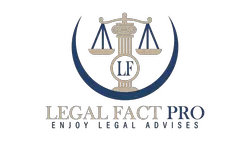
How to Fight a Stop Payment Check | 7 Pro Ways by Expert
The contents of this web page are for informational and educational purposes only, and nothing you read is intended to be legal advice. Please review our disclaimer before taking action based upon anything you read or see.
A stop payment is a request made by a client to a bank or money order seller to reverse a check written on their account and return it unclaimed. A financial organization can only request a stop payment if the receiver still needs to receive the check or payment. If you need help, keep reading; this post will teach you how to fight a stop-payment check.
Stop payments are typically used when the account proprietor does not want the check to be received for one reason or another. Theft or loss of checks, fake checks, a lack of funds to meet the check amount or a disagreement between the depositor and the person who received the check are a few of the causes. Come along as we elaborate on how to fight a stop payment check below.
How to Fight a Stop Payment Check

You can fight a stop payment check through the following steps:
- Legal rights and protections for both parties
- Contacting the bank and initiating the process
- Providing evidence and supporting documentation
- Filling out a stop payment request form
- Paying the stop-payment fee
- Waiting for the bank’s decision
- Appealing the decision if necessary
Legal rights and protections for both parties
A person’s ability to fight to stop payment on a legitimate check because of a disagreement with someone is not intended to be interfered with by the law.
You do not owe the funds and have the right to halt payments if the other party fails to fulfill his obligation as promised. Stopping payment is not illegal, assuming you also have enough cash to cover the check.
Additionally, a person’s bank must follow directions if they receive a reasonable notification asking them to stop the settlement of a check they made. A person’s bank would typically be held accountable for any losses the person may have incurred if, despite giving reasonable warning, the bank resolves the check.
Contacting the bank and initiating the process
Go to a bank office or call the bank and talk to a live person, not a machine, to stop the payment on a check. Submit a Stop Payment Order request too. Note the check’s serial number, value, recipient’s name, and date. Likewise, follow up in writing. Only if the bank hasn’t already cashed the check will this work. You must contact the check’s receiver if it has cleared to find a remedy.
Additionally, most states allow bank clients to verbally fight a stop payment check. However, your state may have laws that require submitting stop payment petitions on paper.
Providing evidence and supporting documentation
An account user typically needs to give the bank information about a check being processed to seek a stop payment. The bank would then mark the check and stop it from resolving from the account, which is optimal.
Although policies vary among banks, if a bank cannot find the check, it will frequently keep looking for it for another six months. Some institutions allow customers to seek an extension or renewal of the stop payment verbally or in writing.
Furthermore, to stop payment on a check, you’ll need to provide your bank with the following supporting documentation:
Your checking account number, check number, payee details, checksum, and check date
Filling out a stop payment request form
The next step on how to fight a stop payment check is to fill out a stop payment request form. This still holds if the check you want to rescind differs from yours.
In all, you will be required to input the following information when filling out the Stop Payment Form;
- The payer’s account name and account ID.
- The check’s number, issue date, amount, and payee.
- Why are you stopping the check payment?
- The payee’s name and signature.
Paying the stop-payment fee
The bank or credit union may charge you a fee if you ask for a stop payment on a check. Fees also differ by the banking organization. But each stop payment request can cost between $8 and $30. Depending on your checking account with them, some institutions may eliminate the charge too.
The major banks and credit unions’ stop-payment charges are listed below.
| Financial institution | Stop payment fee |
| Wells Fargo | $30 |
| Citi Bank | $30 |
| Bank of America | $30 |
| State Employees’ Credit Union | $8 |
| Navy Federal Credit Union | $20 |
Waiting for the bank’s decision
Before deciding whether to dispute and request a stop payment on a check, ensure you understand your bank’s policies, as stop payment orders are often temporary, and the check may eventually be processed and paid.
A valid stop payment order usually lasts six months before expiring, but you can extend it for one more month. If you want to prolong your stop payment request, your bank might charge you another cost.
Furthermore, while waiting for the bank’s decision, it’s best to communicate with them regarding your options.
Remember that your checking account balance might be zero if your bank cashes the check after the halt payment order expires. You might also be charged excess costs as a result of this.
Appealing the decision if necessary
You might only sometimes be able to stop a check’s payment before it clears. But if you’ve been the target of a scam, there may be ways to get your money back.
Contact your bank immediately if someone took money from your account using a fake check. In most cases, banks must pay you back for fake checks. But you might also need to submit a police complaint and execute a statement saying you didn’t approve the check.
By filing an official protest with the relevant authorities, you can appeal the decision if you cannot agree with your bank. To learn how your bank manages to stop payments, be careful to study the statements for customer accounts.
My Opinion
A stop payment has advantages. However, consider the cost of the termination charge against the check amount before deciding to fight a stop payment check. Let the transaction go through rather than pay the charge if the check amount exceeds the stop payment cost.
You should also take scheduling into account. A stop payment request can be valid only if the receiver still needs to address the check or payment.
In conclusion, stop payments are a fantastic choice for people with bank accounts. It’s good to be reasonably certain that a check is lost or stolen before you fight a stop payment on it.
Additionally, it is advisable first to attempt to resolve your differences with the check receiver personally if you are stopping payment on a check due to a dispute with a retailer. You might always be required to pay fees when you want to fight a stop payment check.
The procedure varies from bank to bank. But generally, the above tips on how to fight a stop payment check will aid you promptly.
References
- Trends in payments clearing and settlement systems: https://www.rba.gov.au/publications/annual-reports/psb/2018/pdf/trends-in-payments-clearing-and-settlement-systems.pdf
- Guide to Checks and Check Fraud: https://web.archive.org/web/20110928041645/https://www.wachovia.com/file/checks_and_check_fraud.pdf

I’m a driven and accomplished law graduate and post-graduate, passionate about sharing my legal expertise via my blog. I hold a Bachelor’s degree in Law from the University of London (UK) and a Master’s in Law from the University of Derby (UK). Both gave me the foundational knowledge and skills to excel in my chosen career path.
Throughout my academic journey, I have gained extensive knowledge in various fields of Law, including Corporate and Business Law in the USA, Criminal Law, International Law, US Copyright law, and most importantly, American Constitutional law.


Comments are closed.